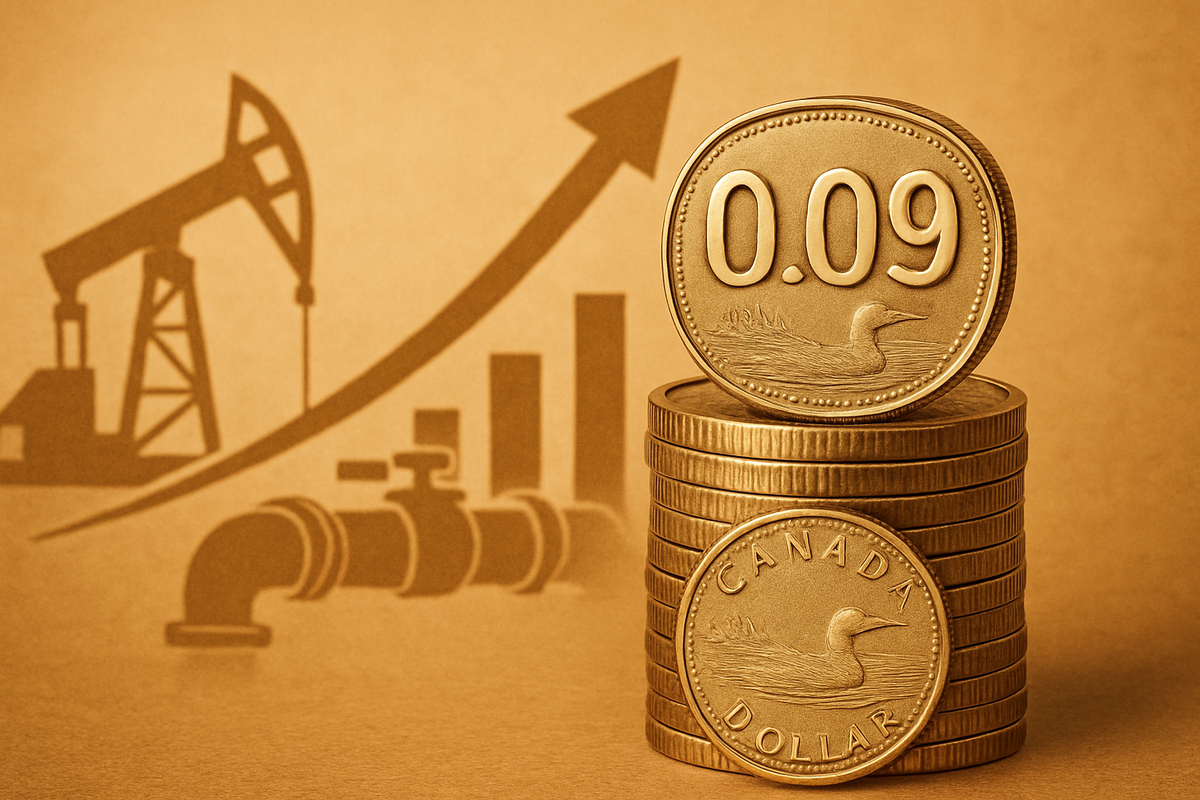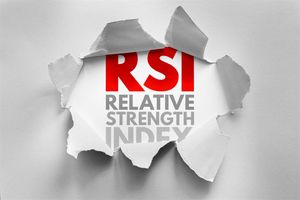
Calgary, AB – October 15, 2025 – Freehold Royalties Ltd. (TSE:FRU) today announced a regular monthly dividend of Cdn. $0.09 per common share, reinforcing its commitment to shareholder returns. This declaration, made on October 15, 2025, sets the stage for a November 17, 2025, payment to shareholders of record as of October 31, 2025. Coinciding with this announcement, the company also completed the payment of its September 2025 dividend, maintaining a consistent stream of income for its investors.
The consistent Cdn. $0.09 per share dividend payout solidifies Freehold Royalties' position as a reliable income-generating investment within the energy sector. While specific real-time market reactions to today's declaration are still unfolding, historical patterns suggest such announcements are generally met with positive sentiment, reinforcing the company's image as a stable income provider. Investors often view these consistent payouts as a sign of financial health and a predictable return, particularly in a market that values steady dividends.
Consistent Returns: A Deep Dive into Freehold's Dividend Strategy
Freehold Royalties (TSE:FRU) has a long-standing tradition of returning capital to its shareholders through regular dividend payments. The recent declaration of Cdn. $0.09 per common share for the October 2025 period, payable on November 17, 2025, follows a similar declaration made on September 15, 2025, which saw its payment distributed today, October 15, 2025. Both dividends are designated as "eligible dividends" for Canadian income tax purposes, offering certain tax advantages to Canadian shareholders.
This consistent monthly dividend payout is a hallmark of Freehold's financial strategy. The company boasts an impressive history, having made a total of 260 dividend payments over its operational life. With an annual dividend payout currently standing at $0.77 per share, translating to an attractive yield of approximately 7.96%, Freehold Royalties remains a compelling option for income-focused investors. The company's dividend policy aims to deliver lower-risk returns and foster long-term growth, targeting a payout ratio of around 60%. This strategy is underpinned by a high-netback portfolio of mineral titles and royalties on oil and gas properties across North America, providing a stable revenue base.
While the company aims for a 60% payout ratio and strives to mitigate short-term market volatility, it's worth noting that Freehold's dividend payments have experienced fluctuations over the past decade. Furthermore, current analysis indicates a high payout ratio of 142.6%, suggesting that the dividend payments are not fully covered by current earnings. This particular detail will be a key area for investors to monitor, as sustainability is paramount. The primary short-term catalysts for the stock's performance and dividend sustainability are operational delivery against production targets and efficient execution of its royalty acquisition strategy.
Market Implications and Company Positioning
Freehold Royalties' (TSE:FRU) consistent dividend policy positions it as a key player for income-seeking investors, particularly in the energy royalty sector. Companies that might "win" from this sustained approach are those investors and funds prioritizing stable cash flow and dividend yield. These announcements tend to attract a specific segment of the market, potentially bolstering demand for FRU shares and providing a degree of price stability, even in volatile energy markets. The predictable income stream can be particularly appealing during periods of economic uncertainty, offering a defensive characteristic to an investor's portfolio.
Conversely, while not directly "losing" from this specific event, competitors in the energy royalty space, such as PrairieSky Royalty Ltd. (TSE:PSK) or Topaz Energy Corp. (TSE:TPZ), might face increased scrutiny regarding their own dividend policies and yields. If Freehold maintains a competitive yield and consistent payouts, it could draw capital away from peers that offer less attractive or more volatile dividend profiles. However, the broader market's perception of the sustainability of a 142.6% payout ratio will be crucial. If investors perceive this as unsustainable, it could lead to concerns about the company's ability to maintain its dividend without impacting its financial health or growth prospects, potentially dampening enthusiasm despite the attractive yield.
The company's ability to fund capital expenditures primarily through funds generated from operations and maintain a robust balance sheet is critical for sustaining its dividend and capitalizing on acquisition opportunities. Any significant shifts in commodity prices (oil and natural gas) directly impact royalty revenues, which in turn affect the funds available for dividends. Therefore, while the dividend declaration is positive for income investors, the underlying strength of the energy markets and Freehold's operational efficiency in managing its royalty assets are paramount for long-term dividend sustainability and overall shareholder value.
Broader Industry Trends and Ripple Effects
Freehold Royalties' (TSE:FRU) consistent dividend declaration fits squarely within a broader industry trend among mature energy companies to prioritize shareholder returns, particularly in the form of dividends and share buybacks. This trend has gained momentum as many producers and royalty companies have shifted focus from aggressive production growth to capital discipline and free cash flow generation. For royalty companies like Freehold, which derive revenue from production without direct operational costs, the ability to generate stable cash flow makes them particularly well-suited for consistent dividend policies. This approach is attractive to investors seeking yield in a fluctuating commodity price environment.
The ripple effects of Freehold's consistent payouts extend to both competitors and partners. For competitors such as PrairieSky Royalty Ltd. (TSE:PSK) and Topaz Energy Corp. (TSE:TPZ), Freehold's dividend performance sets a benchmark. These companies operate in a similar space, and investors often compare their dividend yields, payout ratios, and growth prospects. A strong, consistent dividend from Freehold could pressure peers to maintain or enhance their own shareholder return policies to remain competitive for investor capital. For partners—the operators on Freehold's royalty lands—Freehold's financial stability and continued ability to acquire new royalty interests through a robust balance sheet can be a positive. It signifies a healthy, active participant in the energy landscape, potentially facilitating future joint ventures or royalty acquisitions.
Regulatory or policy implications are generally minimal for routine dividend declarations. However, the broader energy policy environment, particularly concerning oil and gas development in Canada and the U.S., indirectly impacts Freehold by influencing the underlying production on its royalty lands. Any policies affecting drilling activity, environmental regulations, or taxation of energy companies could affect Freehold's revenue streams and, consequently, its ability to sustain or grow its dividend. Historically, royalty companies have been viewed as a relatively stable investment within the energy sector due to their lower operating risk compared to direct producers, making consistent dividends a key differentiating factor.
What Comes Next: Navigating Future Opportunities and Challenges
Looking ahead, Freehold Royalties (TSE:FRU) faces both short-term and long-term possibilities influenced by commodity prices, acquisition opportunities, and its dividend policy. In the short term, the company's ability to maintain its Cdn. $0.09 monthly dividend will largely depend on stable to improving oil and natural gas prices, which directly impact its royalty revenues. Investors will closely watch quarterly earnings reports for indications of cash flow generation and how it aligns with the dividend payout. The high current payout ratio of 142.6% suggests that while the dividend is attractive, its sustainability in the face of significant commodity price declines or unforeseen operational issues could become a point of concern.
In the long term, Freehold's strategic pivots will likely involve continued disciplined acquisitions of new royalty interests across North America to grow its asset base and diversify its revenue streams. The company's robust balance sheet is crucial for capitalizing on these opportunities. Expanding its portfolio into areas with strong drilling inventory and favorable regulatory environments will be key. Market opportunities may emerge from smaller, private royalty holders looking to monetize their assets or from producers seeking to streamline their operations by selling non-core royalty burdens. Challenges could include increased competition for quality royalty assets, fluctuating energy prices, and evolving environmental regulations that could impact future drilling activity.
Potential scenarios range from a continued stable dividend profile supported by steady commodity prices and strategic acquisitions, to a scenario where sustained lower commodity prices force a re-evaluation of the dividend policy. Freehold's management has indicated its dividend rate is established with the intention of mitigating short-term market volatility over several months, suggesting a degree of resilience. However, significant, prolonged downturns could necessitate adjustments. Investors should monitor global energy demand, geopolitical developments affecting supply, and Freehold's operational performance in integrating new acquisitions and optimizing its existing royalty portfolio.
Comprehensive Wrap-Up: Assessing Freehold's Market Position
Freehold Royalties' (TSE:FRU) consistent declaration of a Cdn. $0.09 per common share dividend underscores its commitment to shareholder returns and reinforces its standing as a reliable income provider in the energy sector. The key takeaway is the company's dedication to a monthly payout, a strategy that has cultivated a loyal base of income-focused investors over its 260-payment history. This consistency, coupled with an attractive yield, positions Freehold as a noteworthy option for those seeking stable cash flow.
Moving forward, the market will assess Freehold's ability to sustain this dividend, particularly given the reported 142.6% payout ratio. While the company's robust balance sheet and strategy of funding capital expenditures from operations provide a buffer, the long-term sustainability is intrinsically linked to commodity price stability and the successful execution of its acquisition strategy. Investors should watch for trends in oil and natural gas prices, which directly impact royalty revenues, and monitor Freehold's progress in expanding its diversified North American royalty portfolio.
The lasting impact of Freehold's dividend policy is its contribution to the narrative of energy royalty companies as stable, yield-oriented investments. In a volatile energy market, such stability is a premium. Investors should pay close attention to management commentary on dividend coverage, future acquisition plans, and any shifts in the broader energy market landscape in the coming months, as these factors will be pivotal in determining the company's trajectory and the continued reliability of its payouts.
This content is intended for informational purposes only and is not financial advice








